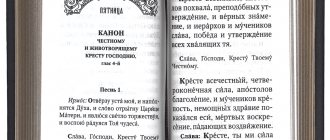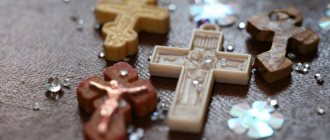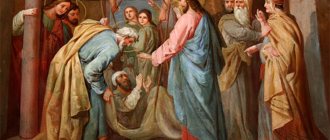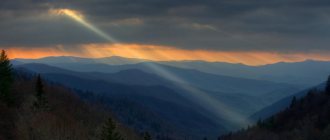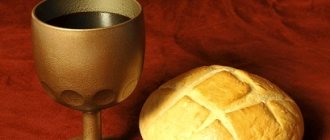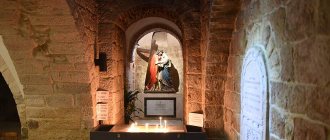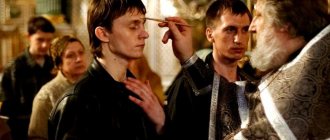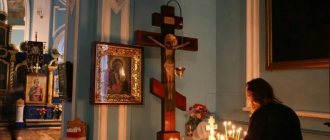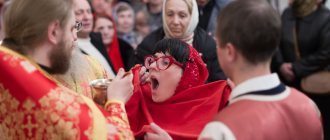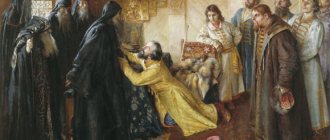In the mid-15th century, two special religious movements emerged in the Russian Orthodox Church. These two directions were different from each other. One of them was called Josephiteness, and the other was non-covetousness.
The ideologist of Josephiteism was Joseph Volotsky, who defended a conservative attitude towards all movements in the church. But the leader of the non-covetous people became Nil Sorsky. Our article is about how these directions developed.
Non-covetousness
this is one of the main spiritual and moral foundations of Holy Rus'
The essence of this direction was the predominance of spiritual and moral motives of life behavior over material interests.
As we know, in the souls of all our ancestors, and above all ordinary peasants, there was always a sense of justice, and not just material retribution. Even then, people believed that they needed to live with dignity and remunerate according to their conscience.
Around the 19th century, an ideal of justice was created, which became a kind of compass for Russian people. He talked about the fact that there is no need to chase wealth and profit. It was these goals in life that were considered unworthy.
The most important thing was that you need to live your life kindly, in truth and with dignity.
A person should never strive for wealth or hoarding; he should always be content with what he has. The Russian people also came up with various proverbs and sayings, for example, extra money means extra worries.
Non-covetousness is an evangelical virtue, as well as one of the monastic vows upon tonsure
In Orthodoxy we often hear such a word as “non-covetousness.” What it is? Non-covetousness is an evangelical virtue, which is expressed in a person’s independence from the passion for hoarding, as well as excessive attachment to material goods. It is the subject of one of the three monastic vows that is considered to be non-covetousness. Let's consider what the holy fathers said about what non-covetousness is and how to acquire it.
The Monk Isaac the Syrian said that no one can acquire true non-covetousness if he cannot endure all temptations with great joy in his soul:
“...no one can acquire real non-covetousness unless he prepares to endure temptations with joy. Without non-acquisitiveness, the soul cannot free itself from the rebellion of thoughts and, without bringing the feelings into silence, it will not feel peace in thought.”
Isaac Sirina
Reverend
[/aside]
Saint Ignatius Brianchaninov said that in order to acquire love for spiritual and heavenly objects, one must completely renounce love for earthly objects:
“...He who distributed his property to the poor in order to show complete obedience to the Savior... who himself became a beggar in order to subject himself to the hardships associated with poverty and abundantly bringing humility, by this action destroys all his hope in the world, concentrating it in God.
In order to acquire love for spiritual and heavenly objects, one must renounce love for earthly objects. Non-acquisitiveness and renunciation of the world are a necessary condition for achieving perfection. The mind and heart must be completely directed towards God, all obstacles, all reasons for entertainment must be eliminated...”
Ignatiy Brianchaninov
saint
[/aside]
Russian
| Wikidata has the lexeme non-acquisitiveness (L134004). |
Morphological and syntactic properties
| case | units h. | pl. h. |
| Them. | non-covetousness | non-covetousness |
| R. | non-covetousness | non-covetousness |
| D. | non-covetousness | non-covetousness |
| IN. | non-covetousness | non-covetousness |
| TV | non-covetousness | non-covetousness |
| Etc. | non-covetousness | non-covetousness |
no-stya-zha-ni·e
Noun, inanimate, neuter, 2nd declension (declension type 7a according to the classification of A. A. Zaliznyak).
Prefix: not-; root: -stacha-; suffix: -ніj; ending: -e.
Pronunciation
- MFA:
Semantic properties
Meaning
- bookish, outdated selflessness, absence of greed, passion for wealth, hoarding ◆ His non-covetousness was perfect; He didn’t accept alms, but he didn’t give them either, because there was nothing to give; he worked for free, went to the poor to reap and mow, but mainly at night, so that no one could see him. M. E. Saltykov-Shchedrin, “Articles of 1856-1860”, 1856-1860 (quote from the National Corpus of the Russian Language, see References)
Synonyms
- unselfishness, disinterestedness, non-covetousness
Antonyms
- greed, love of money
Hypernyms
Hyponyms
Related words
Closest relationship
- nouns: non-acquisitive, non-acquisitive, non-acquisitive; acquisition
- verbs: acquire
Etymology
From not + acquisition, further from ch. acquire, further from praslav. *sъ-tęžati; associated with craving, heavy. Data from the Explanatory Dictionary of the Russian Language were used, including information about the origin of words (2007). See References.
Phraseologisms and stable combinations
- Add hypernyms to the “Semantic Properties” section
- Add at least one translation to the “Translation” section
Translation
List of translations
Bibliography
| To improve this article it is desirable: |
Monks who come to serve in the monastery take a vow of non-covetousness
Monks who come to serve in the monastery and give their lives to God take a vow of non-covetousness. This is what is given at tonsure. A monk who trusts in the Kingdom of Heaven denies all earthly riches down to the very minimum property, because the guarantee of his safe existence is not in the abundance of supplies, but in Christ. It is in this that the monk finds real wealth.
Non-covetousness is not only moral commandments, but it is a condition for perfection, which every person should strive for. It is then that he will become a citizen of the Kingdom of Heaven.
The leader of the non-possessors was Nil Sorsky
As we see from history, non-covetous people are usually called the spiritual and political movement of the Russian Church at the end of the 15th and first half of the 16th century. This term was introduced by Russian liberal Slavophiles in the 2nd half of the 19th century for the Trans-Volga monasteries.
The term was first used by canon law historian Alexei Pavlov. That’s what he called Vassian Patrikeev. All this gradually began to be reflected in the interpretation of the worldview of northern monasticism.
Who is the leader of the non-covetous? It is also customary to explain the position of non-possessors solely by religious and moral beliefs. Also, another unjustified trend was the convergence of the views of his teacher, the Venerable Nile of Sora. Nil Sorsky was considered the ideological inspirer of the non-covetous people; this was their spiritual leader. And Prince Vassian was his student and faithful follower.
It was the views of Nil Sorsky on all issues that were sharply contrasted with the views of Joseph Volotsky.
Nil Sorsky was considered the ideological inspirer of the non-covetous people; this was their spiritual leader. Photo: kirillov-monastyr.ru
It is also worth paying attention to the fact that the problem of the monastic economy did not burden the brethren and monks with their worries. From ancient times, Byzantine monasteries were provided with land grants, which were intended to support the monasticism of the empire. A great increase in monastic land ownership was observed during the era of the Macedonian dynasty.
In the 16th century we see that active distribution of land to monasteries began. Athonite monasteries enjoyed special privileges. Of course, this brought a number of other problems. For example, the fact that in the process of reorienting the church, the problems of worldly life began to be solved. Which was opposed to the original spiritual task of saving the human soul. Soon monasteries began to spread in the East.
Archbishop Eustathius of Thessalonica opposed this. He demanded that monastic land ownership be limited, since they cause great harm, especially for those who decided to accept the monastic image. He said that small monasteries should not have taken land at all. Monasteries must obey their diocesan rulers. Monasteries that were not subordinate to secular voters, where the monks themselves had to deal with affairs and issues that they should not have touched.
The revival of monasticism became associated with the name of St. Gregory of Sinaite. It was he who raised the question of the goals of monastic life.
The revival of monasticism began with the name of the great saint - St. Gregory of Sinaite. This saint raised the question of the goals of monastic life. Photo: simvol-veri.ru
Non-covetousness
Non-covetousness as a monastic movement arose and took shape among the brethren of the Kirillo-Belozersky Monastery. The first disagreements among the monastic brethren are known under Abbot Tryphon in the 40s of the 15th century[20]. It is difficult to say with certainty what the real reasons for the disagreement were. According to N.K. Nikolsky, the cause of disagreement was the issue of monastic estates, when the abbot, contrary to the rules of St. Cyril, acquired several remote villages[21]. However, the only indirect confirmation can be considered that under Tryphon’s successor, who became the monk of the Spaso-Kamenny Monastery Cassian, the monastery reduced its land acquisitions. It was under Cassian that Pachomius Logothetes wrote the life of Cyril of Belozersky, which stated that the monk did not acquire lands[22]. As stated above, this information is incorrect, but the very emphasis on the question indicates the mood within the monastery and that the topic was discussed.
Nikolsky, who studied the business acts of the monastery, notes that after the abbess of Cassian and until the 2nd decade of the 16th century, the monastery did not acquire land, and donations were rarely accepted. Nikolsky connects this with the influence of non-covetous people. However, he also points out that in a number of regions, including Belozerye, under Ivan III, the sale of lands and their transfer to monasteries for the funeral of the soul was limited[23].
The next famous clash occurred under Abbot Serapion (1482-1484), who took over 29 villages and settlements in the Vologda volost from Ivan III. At this time, the Kirillo-Belozersky Monastery was already a large landowner, and the acquisition of new lands was not a matter of monastic support[24]. Another violation of Cyril’s covenants led to the fact that at the end of June 1483, 15 Cyril elders left the monastery in protest. The intervention of Prince Mikhail Andreevich of Belozersky made it possible to get rid of the “acquisitive” abbot, the conflict was settled and the elders returned to the monastery in March 1484[25]. The next abbot, who became a close disciple of Nil Sorsky, Gury (Tushin), returned the lands received under Serapion to the prince and asked for bread in return[26]. However, here too we have only indirect indications that the cause of the conflict was the land issue. N.A. Kazakova doubts this, citing the words of Joseph Volotsky that the departure of the elders occurred as a sign of protest against the actions of Serapion, who violated the internal regulations of the monastery and did not keep the tradition of St. Cyril[27].
After 1419, the Kirillo-Belozersky Monastery again began to acquire land. In the 2nd quarter of the 16th century, the monastery received more favorable and developed lands with a larger population to the south, closer to the borders of the Moscow principality.
Cathedral of 1503
Main article: Council of 1503
The first documented case of a clash between supporters of limited and large monastic land ownership was the local council of the Russian Church in 1503. Strictly speaking, the cathedral was dedicated to disciplinary issues (known as the “cathedral on widows’ priests”), but, according to sources, at the end of the cathedral or, most likely, after the cathedral sessions, a dispute took place about monastic estates. There is no mention of this controversy in the council acts. Other sources contradict each other so much that a complete picture does not emerge. In all likelihood, the initiator who raised the issue was Grand Duke Ivan III. The direct interest of the secular authorities was explained by the need to replenish the “service” lands, which was supposed to be done at the expense of church land ownership. The Grand Duke already had experience in secularizing church lands in Novgorod and probably wanted to spread it further. The mood of Trans-Volga monasticism favored these plans and gave them a moral basis. At the cathedral, the idea of limiting monastic land ownership was presented by the Monk Nil of Sorsky, but the words attributed to him in the “Letter about the Nelyubki” contradict the “Tradition” and the “Skete Rule”, which belonged to the hand of the elder. Most likely, we have before us a tendentious interpretation of what the Monk Neil actually said at the council. Apparently, the main debate was between the Grand Duke and the church hierarchs. This follows from the “Conciliar Answer” and “Another Word”. According to the “Another Word”[28], the prince was opposed by the Trinity abbot Serapion and Archbishop Gennady of Novgorod. The document does not mention the name of Joseph Volotsky at all. The controversy ended with the victory of the hierarchs, and the question of monastic land ownership was abandoned for the time being.
The monks of the two most influential Russian monasteries at this time were occupied with other issues, and their relations after the “first dislike” (the speech of the Volga residents on the side of the Grand Duke) remained quite friendly. At least until 1511, the monks of the Volokolamsk Monastery, Nil Polev and Dionysius of Zvenigorod, lived in their own deserts among the monks of the Kirillov Monastery and had regular communication with them. And Nil Sorsky himself at this time participated in the compilation of “The Enlightener” by Joseph Volotsky. Judging by the surviving correspondence, the monks of the two corporations were arguing at this time about the attitude towards the Judaizers convicted at the council of 1504 and about the case of Archbishop Serapion of Novgorod.
Attitude towards heretics
The decision[29] of the 1504 council, unprecedented for the Orthodox Church, to burn heretics caused considerable confusion in Russian society. Joseph Volotsky was forced to come out with the essay “The Sermon on the Condemnation of Heretics”[30], proving the need for executions. However, his arguments failed to calm the unrest. We find echoes of these disputes in the private correspondence of the Kirillov and Volotsk monks. In a letter from Nil (Polev) to Herman Podolny, this is mentioned in passing; the letter is devoted to another dispute: the monks at this time share an attitude towards history with the excommunication of the Abbot of Volotsk himself by his diocesan ruler, Archbishop Serapion of Novgorod[31][32]. Neil, reproaching Herman for trying to condemn the council and the bishops, quotes his words: “It is not appropriate for us to judge anyone, whether faithful or unfaithful, but it is appropriate to pray for them, and not send them to prison.”
. This brief mention speaks volumes about the heated debate among monks about the execution of heretics. Around the same time, Nile’s comrade, the Volotsk monk Dionysius of Zvenigorod, launched a genuine “search” for heretics in the Belozersky hermitages. The “search” gave two cases, which Dionysius hastened to present as evidence of the “great heresy.” In one case, Dionysius found a cross under the bed in his cell; in another case, the elder, taken by surprise, threw a certain book into the oven. However, this was enough, and the denunciation was sent to the Volotsk abbot, and he reported to the Grand Duke. Vassian Patrikeev, who had been under the patronage of the Grand Duke since 1509 and lived in the Simonov Monastery in Moscow, demanded that Elder Serapion, who delivered the denunciation, be interrogated. The interrogation was biased and during the torture the elder died. The angry prince ordered the Belozersk hermitages of the Volotsk monks to be burned, and they themselves to be taken to Kirillov under arrest. However, the monks were soon released. From what happened it becomes clear that the defense of heretics brought suspicion of heresy upon the Cyril monks themselves.
The continuation of the controversy was reflected in the “Response of the Kirill Elders”[33]. The main argument of the Trans-Volga residents is a reproach for adherence to the Old Testament: “If the old law were then in the new grace, the Lord would show us a Christ-loving union, so that brother cannot condemn brother.”
.
Indeed, Joseph could draw the best arguments in defense of his position from the Old Testament. Byzantine examples are extremely few and are rather exceptions. In addition to the “Response of the Cyril Elders”, “A Sermon on the “Writing Down of Joseph of Volotsk””, “A Sermon on Heretics from the Holy Scriptures” and others are devoted to this topic. In the “Word to Write Off,” attributed to Prince Vassian, the author criticizes the punitive measures of St. Joseph and calls not to be afraid of theological disputes with heretics. The author appeals to John Climacus: “Heretics do not eat the weak, but the strong come together for the glory of God
.
Repentant heretics, according to Vassian, should be forgiven[34]. “The Tale of Heretics,” a later document, is distinguished by a well-developed argumentation involving canonical sources. Vassian distinguishes between repentant and non-repentant heretics, while allowing executions, but recognizes them as the work of secular authorities[35]. Guriy Tushin rewrites the “Tale of Heretics”, introducing his own changes into it, however, insignificant ones. An interesting addition by Gury is a successful refutation of the example of Bishop Leo of Katansky given in the 13th word of the “Book on Heretics” by Joseph of Volotsky. Joseph Volotsky gives this example without pointing out that Leo himself subjected himself to the test in fire along with the heretic Iliodor, but remained unharmed. This example will be used in the “Response of the Cyril Elders” with a reproach to the Volotsk abbot: “Why, Mr. Joseph, will you not test your holiness without binding Archimandrite Kasian with your mantle, until now he has burned?”
[36]. In “The Answering Word,” a document probably dating back to the second half of the 20s, Vassian again returns to the topic of attitude towards heretics, insisting that it is inadmissible for secular authorities to execute them, but to limit themselves to imprisonment in prisons and exile. Thus, the opinion of the disgraced prince on this issue softens even more.
Controversy over monastic estates
Until the beginning of the 20s, written sources tell us nothing about disputes over monastic lands. The private mention of monastery lands by Joseph Volotsky in a letter to I. I. Tretyakov does not indicate controversy. However, the background of this silence itself is indicative. Around 1509, the monastic prince Vassian (Patrikeev) actually returned from exile. He settles in the “court” Simonov Monastery and enjoys the patronage of Grand Duke Vasily. In August 1511, the Belozersk tonsure Varlaam, who had previously been abbot of the same Simonov Monastery, became Metropolitan of Moscow. Both Belozersk residents have close relationships[37]. Meanwhile, the disgraced prince begins work on a new edition of the Helmsman's Book. Three editions of Vassian's Helmsman have survived, which indicate complex work on a new set of canonical rules. Finally, in February 1520, a series of consecrations followed: Belozersk residents became bishops[38]. According to the observation of N.A. Kazakova, the composition of Guria’s (Tushin’s) collections is changing: it now includes more texts devoted to issues of public monastic life. The interest of the Grand Duke himself in the organization of Athonite monasteries is also indicative. At his request, Maxim the Greek, who arrived from Athos in 1518, wrote the Epistle “On the organization of the Athos monasteries”[39].
Maxim Grek
The visiting Athonite monk clearly sympathizes with the non-covetous ideal, and in his person Vassian finds support. Probably, not without the help of a learned Greek, the 24th rule of the VI Ecumenical Council and the 12th and 18th rules of the VII Ecumenical Council with interpretations of Balsamon appear in Kormchay. Later, he writes “The Legend” for Vassian, which he includes in his Helmsman. And in a number of his polemical works, the Athonite monk, already familiar with the realities of Russian life, sharply takes up arms against “Jewish love of money and godless covetousness”
.
And these are not abstract accusations. “the saints of God, priests, archimandrites and abbots”
of this , calling the righteousness of the covetous worse than the righteousness of the Pharisees[40].
The Monk Maxim does not speak out against monastic estates, but he is outraged by excessive acquisitions, an unmerciful attitude towards his neighbors, and love of money: “A great deal of acquisition removes us far from the monastic covenant, makes us a criminal of our vows
,” he writes in the dialogue “The Tradition of Firm Monastic Residence”[41] In a dialogue, a certain Philoctimon and Actimon, “The Covetous” and the “Non-Acquisitive”, argue.
Knowing the arguments of his opponents, who referred to the Old Testament righteous, the Monk Maxim writes: “Where it is written that, contrary to the commandment of the law, they should lend their silver with interest or demand from the poor interest on interest, and that from those who are not able to pay what they took in debt, due to its increase in interest over many years, they took away the last beggarly insignificant property remaining from them, as we now dare to do with the poor villagers, burdening them with large interest rates and ruining them if they cannot pay back what they took”
[42].
In 1521, significant changes occurred in the policy of the Moscow state. Relations with Porta begin to become complicated. The raid on Russian lands in the summer of 1521 by the Crimean Tatars, vassals of Turkey, is evidence of this. The Greeks, subjects of the Sultan, are under suspicion. In 1522, the sovereign's treasurer, the Greek Trachaniot, fell from grace. The contacts of Maxim the Greek and his circle with the Turkish ambassador Skinder (Iskander Saki), also a Greek, become obvious. In December 1521, Metropolitan Varlaam was removed from the metropolis. The probable reason for the disgrace of the head of the Russian Church should be considered his refusal to give deliberately false security guarantees to the Novgorod-Seversky appanage prince Vasily Shemyachich. Obviously, Varlaam refused to participate in the deliberate deception, which aroused the wrath of the Grand Duke[43]. In place of the “non-covetous” metropolitan, the princely will put in place Abbot Daniel of Volotsk, Vassian’s future opponent.
Under these conditions, in 1523, Vassian (Patrikeev) began to fight with Metropolitan Daniel. But Vassian’s reliance on the visiting Greeks, his natural allies, weakens his position. The controversy takes on a political hue. The authorities are additionally irritated by the negative attitude of the Greeks towards the autocephaly of the Russian Church. Maxim the Greek repeatedly speaks about its non-canonical nature. The case ends with the conviction of Maximus the Greek in 1525. Maxim Grek was convicted in the case of Ivan Bersen-Beklemishev, in which he initially acted as a witness. Bersen was convicted of “unbecoming” speeches against the Grand Duke. In addition to “unsuitable speeches,” the Monk Maxim was accused of relations with the Turkish Sultan and of heresy, the reason for the accusation was errors in the translation of the “Colored Triodion.” He was also charged with censure of Russian spiritual books, the translations of which he considered to be spoiled. After the trial, he was imprisoned in the Volokolamsk monastery, where, according to him, he suffered bullying from his opponents.
Another document written by Vassian is related to the issue of monastic land ownership. The full title of the document is “The Word in Response Against Those Who Slander the Truth of the Gospel.” The early list of “The Word of Answer” dates back to the 20s of the 16th century and probably dates back to the second half of the 20s[44]. The monastic prince opposes monastic villages and estates, the torture of “poor brothers” by monks, their engagement in worldly activities, simony, and usury. In this document, Vassian Patrikeev also relies on the 11th word of the “Book on Heretics” by Joseph of Volotsky, pointing out to Metropolitan Daniel the teachings of his own mentor, thereby revealing the changes that occurred in the “Josephite” doctrine after the death of St. Joseph. “Vassian’s opponents drew diametrically opposed conclusions from these words, fairly interpreted by Joseph Sanin...”[45]. In “The Answering Word,” Vassian, among other things, disputes the contemporary canonization of the venerable ascetics Paphnutius of Borovsky and Macarius of Kalyazinsky.
It is worth noting Vassian's moderation regarding monastic estates. His program does not provide for the secularization of church property. The monastic lands are supposed to be transferred to the disposal of episcopal sees, which must take care of providing for the monasteries of the diocese. In other words, Vassian proposes a redistribution of property within the church. In the explanation to the 11th facet “About the villages that spoil the monastery” it is written: “it is not the monk who commands it to be owned, but the villages given to him from the cathedral church by the icon... and are nourished by him with all kinds of needs, by command from their bishop or by alms from the lovers of Christ, if they do not have enough with his rule"
[46]. Thus, the positive program of the monastic prince includes the transfer of monastic villages to the jurisdiction of the episcopate and the white clergy under the management of ecologists. The monasteries must be content with these estates, since “they are not satisfied with their property.” A radical innovation in the third edition is the possibility of alienation of deposits if the monastery does not fulfill the Gospel commandments[47]. In “The Meeting of a Certain Elder,” in addition to the persistent denial of monastic villages, Vassian speaks of moderation in charity, of feeding the monks from their ruel. These motives are undoubtedly connected with the teachings of the Monk Neil[48]. The appearance of articles by “Hellenic sages”, probably translated by Maxim the Greek, is unexpected. These are the letters of Aristotle to Alexander the Great, and Socrates. This was subsequently imputed to Vassian by Metropolitan Daniel at his trial in 1531. The tone of the third edition is significantly toughened. If in the first two editions the monks who violated the commandments were defended by abstract “Pharisees,” then in the third edition it is said more definitely: these are the shepherds and princes of the church. There is an emerging tendency to criticize cenobitic monasteries[49]. These facts indicate that the conflict is growing. The case is heading towards a denouement, which came at the trial of 1531.
The reason for the new trial was the alleged “new guilt” of Maxim the Greek. Maxim was again subjected to interrogation, which was conducted by Bishop Dosifei Zabella of Sarsk. A new interrogation confirmed Maxim’s previous “guilts” and “revealed” new ones. The entire list of accusations is presented in the speech of Metropolitan Daniel. Among them are non-admission of guilt; the Greek scientist was accused of sorcery and witchcraft as “Hellenic and Jewish.” Among the new crimes are corrections made to liturgical books, which were declared “damage”[50]. This point of accusation also affected Vassian, who led the book “right”. The scribe Mikhail Medovartsev, who participated in the translations, was also convicted, accused by Daniil of a whole range of various heresies. Dosifey Toporkov, with whom Vassian once had a good relationship, argued that he did not recognize the uncreated nature of Christ, calling him a creature. “Suddenly” it turned out that Maxim was against monastic acquisitions, and also did not recognize the Russian miracle workers, whom he called “troublemakers.” A new motive for accusations appears that did not exist six years ago. Not without reason, A.I. Pliguzov suggests that the trial of Maxim was started in order to overthrow the once all-powerful Prince Vassian in the same case. Indeed, according to the verdict of the court, despite the new “terrible” guilt of Maxim the Greek, his fate became easier; he was exiled to the Tver Otroch Monastery under the supervision of the Tver Bishop Akaki, who favored him. Maxim Grek gets the opportunity to write. His place in the Volotsk monastery is taken by Vassian, who was convicted along with him. Soon Vassian dies, as Andrei Kurbsky claims, “at the hands of the despicable Osiphlans”
.
Against the backdrop of growing confrontation, the attitude towards St. Neil in the Volokolamsk monastery for a long time continues to be respectful. The flattering characteristics of Volotsk tonsures can be traced back to the 30s of the 16th century. But even after this, the works of St. Neil were copied in the Volokolamsk monastery. True, now they don’t sign. Perhaps the turning point in relation to Nil Sorsky was the trial of Vassian Patrikeev in 1531. In any case, it was at the trial that Dosifey Toporkov recalls the words once spoken by Prince Vassian, contrasting the teachings of Nile and Joseph: “As your Joseph wrote... my elder Nile did not search, did not write.”
[51]. There is also no visible antagonism among the Belozersk monks. It was during this period that the monk Cornelius of Komel, who was tonsured at the Kirilo-Belozersky Monastery, wrote the monastic charter, which was based on the charter of the Venerables Nil and Joseph. Nevertheless, the monks of both monastic corporations were soon prohibited from communicating.
Monastery of St. Cornelius of Komel
Main article: Korniliev-Komelsky Monastery
Korniliev-Komelsky Vvedensky Monastery
The third Russian monastic charter, which later became a model for the organization of a number of northern monasteries, was the charter of the Monk Cornilius of Komel, which he gave to the cenobitic Vvedensky Korniliev-Komelsky monastery that he founded. The appearance of the charter dates back to between 1515 and 1529. The peculiarity of the Cornelian charter is that it is based on the charters of both St. Neil and St. Joseph. From the Rule of Nilus of Sora, Cornelius borrowed a lengthy introduction, supplemented by his discussions about the responsibility of the abbot for the fate of monks, as well as about the basic principles of monastic life according to Basil the Great. Specific instructions on the rules of cenobitic monasticism are borrowed from the lengthy edition of the Rules of Joseph Volotsky. Subsequently, the disciples of the Monk Cornelius, who founded new monasteries, based the monastic structure on the charter of their teacher. There are 8 known monasteries founded only by direct disciples of Cornelius.
Like other cenobitic monasteries, the Cornelius Monastery owns lands. The life of the saint talks about the monastery fields being cultivated by workers. The life does not indicate the status of the workers, but here is an interesting dialogue between the saint and Grand Duke Vasily: “And the great prince said to the saint: “ I heard, father, that since you created the monastery, you have no villages [52] “So this is what you need, ask and I will give it to you.”
.
Cornelius did not want to ask for anything else, except that he begged to be given some land with a forest near the monastery, and from the sweat of his brow I eat, he said, his bread
.”
Indeed, in the northern monasteries, at least in the first centuries of their existence, they preferred to make do with their own labor. With a shortage of workers, they tried to use hired labor. But this is only if the monastery had enough funds to hire[53]. Land that the brothers did not have the opportunity to cultivate themselves could be leased. However, even with a surplus of harvested crops, they did not try to sell them[54]. The life of the Monk Cornelius reports on the significant alms that the monastery distributed to local peasants in lean years: “Our father Cornelius prayed for a long time with tears to the Lord God and the Most Pure Mother of God and began his previous labors: cutting down forests and sowing fields, so that not only his bread eat, but also feed the poor
. Monastic tradition has preserved the memory of the appearance of St. Anthony the Great, in which the founder of monasticism blessed Cornelius for the further distribution of alms.
“Second wave” of non-possessors
The trial of Vassian and Maxim the Greek did not become the end point of the non-acquisitive movement. And if the controversy subsided for a while, then in the monasteries themselves they continued to discuss the pressing problems of monastic life. The recognized leader of the “second wave” of non-covetous people is the elder of the Porfiry Hermitage, Artemy. Artemy, a monk of the Korniliev-Komelsky monastery, settled in the Porfiriev [55] desert with the blessing of the Monk Cornelius. From the elder’s message to Tsar Ivan the Terrible, it is known that in Korniliev there were some disagreements between Artemy and the brethren regarding the monastery property. There is no reason to say whether this was the reason for Artemy’s departure to the desert. In the Cornelius Monastery, quite according to St. Neil, the issue of monastic land was resolved: they tried to avoid vast estates with a dependent peasant population, limiting themselves to the labor of the monks themselves and hired workers. Among the inhabitants of the Porfiry Hermitage, the elders Isaac (Belobaev), Porfiry the Maly, and Savva Shah are known for their non-covetous views. Theodoret Kola, the enlightener of the Lapps, spent four years here.
The resumption of controversy occurred in the 40s and 50s. It is largely connected with the reform activities of the circle of Metropolitan Macarius. On the eve of the Stoglavy Cathedral, secular authorities are returning to the idea of limiting monastic land ownership and are looking for support among non-acquisitive people. Among the reformers, these ideas are supported by the archpriest of the Annunciation Cathedral and the tsar's confessor Sylvester and Alexey Adashev. However, even before the council, the inspirer of the reforms, Metropolitan Macarius himself, wrote a letter to the young king in which he defended monastic land ownership.
Artemy outlined his views in a message to Ivan the Terrible, written by him in the spring of 1551. The message itself has not survived, but there is a mention of it in another letter from Artemy to the king. From the text it becomes clear that Artemy, opposing monastic land ownership, and allowing the seizure of monastic lands
, however,
did not support forced secularization
.
As Pliguzov suggests, Artemy also owns the “Debate with Joseph” attributed to Vassian Patrikeev[56]. At the very least, the document sounds more radical than Vassian’s program, and it was here that the “I command the prince...”
[57].
"Stoglav" never touched church lands. The exception was the so-called Chapter 101, which puts the transfer of land to monasteries under state control and limits the ability to acquire land. But only lands acquired by the church illegally in the period after the death of Grand Duke Vasily III are confiscated[58].
Nevertheless, a number of representatives of non-possessors at this time are promoted to the highest church positions. At the beginning of 1551, the Belozersk monk Cassian was installed as Bishop of Ryazan[59]. Artemy himself becomes abbot of the Trinity-Sergius Monastery. And Theodoret of Kola, expelled by the monks from the Kola Trinity Monastery he founded, becomes the archimandrite of the large and influential Spaso-Evfimiev Monastery in Suzdal. Another Belozersk, abbot of the Kirilov Monastery Afanasy, in the same 1551 occupied the see of the Suzdal diocese.
However, soon many of the non-possessive monks named here appeared before the cathedral court. At the end of 1553 - beginning of 1554, a council was held, convened on the case of the heresy of Matvey Bashkin. As part of the cathedral court, a number of Belozersk non-possessive monks were also convicted. Elder Artemy was condemned; although his heresy was not proven, his influence on the formation of the heresy became obvious. Already in Lithuania, Artemy wrote to one of his comrades in misfortune: “Since you have venerated the unrighteous sciences, sometimes we ourselves, having not felt the charm of the Antichrist spirit that exists in them, do not dare to blaspheme, but in some speeches we do not dissent.”
[60]. Elders Porfiry Maly and Savva Shah, accused of denying the miracles of saints, as well as Isaac (Belobaev) were convicted. What Isaac was accused of is unknown. Suzdal Bishop Athanasius tried to accuse Theodoret of Kola, whom he disliked, of heresy, linking him with heretics. However, his efforts were not crowned with success. Subsequently, he managed to achieve the exile of the principled abbot to the Kirilov Monastery. Reports of his exile by the verdict of the council to the Kirilo-Belozersky Monastery are not confirmed: at least until the end of October 1554, he remained abbot of the Spaso-Evfimievsky Monastery. The last mention of Theodoret as Archimandrite of Euthymius dates back to October 24, 1554. He was released from exile at the request of Metropolitan Macarius[61].
In January 1554, Theodosius Kosoy and his comrade Ignatius were brought to Moscow for trial from the Novozersky Monastery, who soon managed to escape from custody and take refuge in Lithuania. In Lithuania, Kosoy launched active propaganda activities. His heretical teaching is mainly known from the work of the monk of the Novgorod Otensky monastery Zinovy "Truth testimony to those who asked about the new teaching." The heretics who lived in the Belozersk hermitages shared many of the views of the non-possessors, but their position was much more radical. Theodosius Kosoy eventually came to a complete denial of monasticism. Artemy, who also fled to Lithuania, argued with his former comrades. There are 9 known letters written by him in Lithuania in defense of Orthodoxy.
After the death of Nil Sorsky, Vassian Kosoy became a follower of the non-covetous people.
Let us also pay attention to another spiritual leader of non-possessors - this is Vassian Kosoy. He became a representative of the non-covetous party after the death of Nil Sorsky. Vassian was a prince by birth and belonged to the most noble boyar families. After he left for Moscow, he entered the service of Grand Duke Vasily the First. With the help of the grand ducal power, he was able to reach many heights.
The successor of the leaders of the non-covetous people after the death of Nil Sorsky was Vassian Kosoy. Vassian was a prince by birth and belonged to the most noble boyar families. Photo: studfiles.net
Vassian decided to give his life to God behind the monastery wall. It was there that his new life began. At first, the monastery charter did not suit his character. There he met Neil, and with him he escaped to the monastery. It was then that he became a zealous supporter of non-covetous people, although at first he did not share this worldview.
Vassian learned a lot from the Nile, and also adopted a lot from him. If we pay attention to history, we see that the monk Vassian was one of the most interesting figures in Russian history of the 16th century. He was a rather peculiar person who combined himself and his activities with arrogance and passion.
At the time of the death of Nil Sorsky, Vassian had a fairly good understanding of the situation. He did not speak out about his participation in the activities of the council. It was he who helped place Metropolitan Varlaam in a certain role. This decree was made without a council of bishops by order of the Grand Duke, to whom Vassian Kosoy, in turn, turned. It was he who advised to nominate Metropolitan Varlaam to the metropolitan see. Metropolitan Varlaam sympathized with the non-covetous people and became the abbot of the Simonov Monastery, where Vassian then lived. To support him in his business, he sent to him another of the people who then lived on Athos - Maxim the Greek.
Ideology of movements
The ideological credo of the Josephites and the “Trans-Volga elders” was significantly different.
For the spiritual leader of the “elders” Nil Sorsky, faith in the Lord was an exclusively personal matter for each believer, because everything important happens not in the material world, but in the soul. Hence the call to non-covetousness as a way to achieve complete inner freedom for impeccable service to God.
The “Trans-Volga elders,” including Maxim the Greek and Vassian, did not recognize the nationalization of the Church, reducing the role of monasticism to:
- the ceaseless struggle for the soul of man;
- prayers for the flock and clergy.
Managing the lands and the laity is the task of earthly rulers. In the first years of the reign of Ivan IV, this concept was approved on his part, and in the closest circle of Grozny, the “Chosen Rada,” the main roles were played by priest Sylvester, boyar Adashev and Prince Kurbsky, who sympathized with the views of the Nile.
At the turn of the 15th-16th centuries, the Josephites had difficulty finding agreement with Ivan III, who in those years was more inclined to listen to Elder Nile and was hatching plans to return monastic landholdings to the state.
Dissatisfied with the possibility of secularization, as well as with the condescending attitude of the Grand Duke towards heretical “Judaizers”, for example, towards his close associates, clerk Fyodor Kuritsyn and Archpriest Alexei, Joseph created a theory according to which the ruler is, first of all, a man, although appointed to “divine service” .
In his work “The Enlightener,” Volotsky pointed out that a worldly prince may make mistakes that could destroy not only the ruler himself, but also all his subjects. According to Josephus, which was later modified, a secular ruler should be revered; but princes have power only over the body, and they should be obeyed “bodily, not mentally.”
In addition, at that time Joseph believed that spiritual power was higher than secular power, and the church needed to “worship more” than the sovereign.
Nevertheless, the Josephites, based on the postulate of the responsibility of the worldly ruler for the inhabitants of his state before the Lord, saw his prerogative in caring for both the temporal and spiritual care of people, the protection of the true faith, and the protection of his subjects, including from the influence of heretics. Heretics corrupt the souls of people, and, therefore, are worse than robbers who encroach only on the “body”; This means that they need to be “burned and hanged,” as Archbishop Gennady of Novgorod put it.
Over time, the views of the Josephites on the relationship in the triad “Church - government - people” underwent changes, and they began to consider the position of worldly power not lower, but on an equal footing with church power. Joseph's followers proclaimed that it was a sin to disobey a worldly ruler, and even called for them to serve him as a Lord rather than as a man.
Non-acquisitive people recognized the idea of the government’s responsibility to the people, believing that the duty of the government is to “judge and protect.” For them, a real ruler chosen by God must be aware of his highest responsibility to the Lord and people, and observe moral principles in accordance with his status as God’s anointed.
On the contrary, according to the teachings of the Josephites, rulers are not just chosen by Heaven, they themselves are almost sacred personalities.
Therefore, their ideas were liked by the Russian princes and tsars to such an extent that they abandoned the gigantic land holdings of the church, receiving in return inaccessibility to control public institutions, that is, they became absolute monarchs.
Already under Ivan the Terrible, a discussion began on the issue of books. Being supporters of printed books that appeared in Rus' at that time, the non-covetous people pointed out a lot of mistakes made by copyists, which led to discord and “disorder” in church service and worldly life.
The Josephites perceived printing as another “Latin” heresy, arguing that for ordinary people “the honor of the Apostle and the Gospel” was a sin.
Maxim the Greek most fully developed the state-legal aspects of non-covetousness
Maxim the Greek came to Moscow quite by accident, but even then he was a remarkable and major figure in the history of the Russian church. Information about him is very fragmentary and unreliable. It was Maxim Grek who most fully developed the state-legal aspects of non-covetousness.
Maxim Grek most fully developed the state-legal aspects of non-covetousness. Photo: prepodobnii.org
He became the successor after Vassian the Oblique. He tried to support both his laws, which had already been introduced, and began to introduce something of his own. He called on the king to organize the kingdom entrusted to him according to Christ’s commandments and laws, and he also called on everyone to create justice and righteousness in the middle of the earth. It is also worth saying that he connected the structure of government, in which the tsar had to rule together with the metropolitan and listen to his advice. He had to take care of his subjects in a spirit of humanity and tenderness. Royal power had to be limited by both divine and positive law, as well as moral norms. He tried to ensure that the secular and spiritual authorities lived in close union, since they had one goal in front of them.
By leaving a comment, you accept the user agreement
